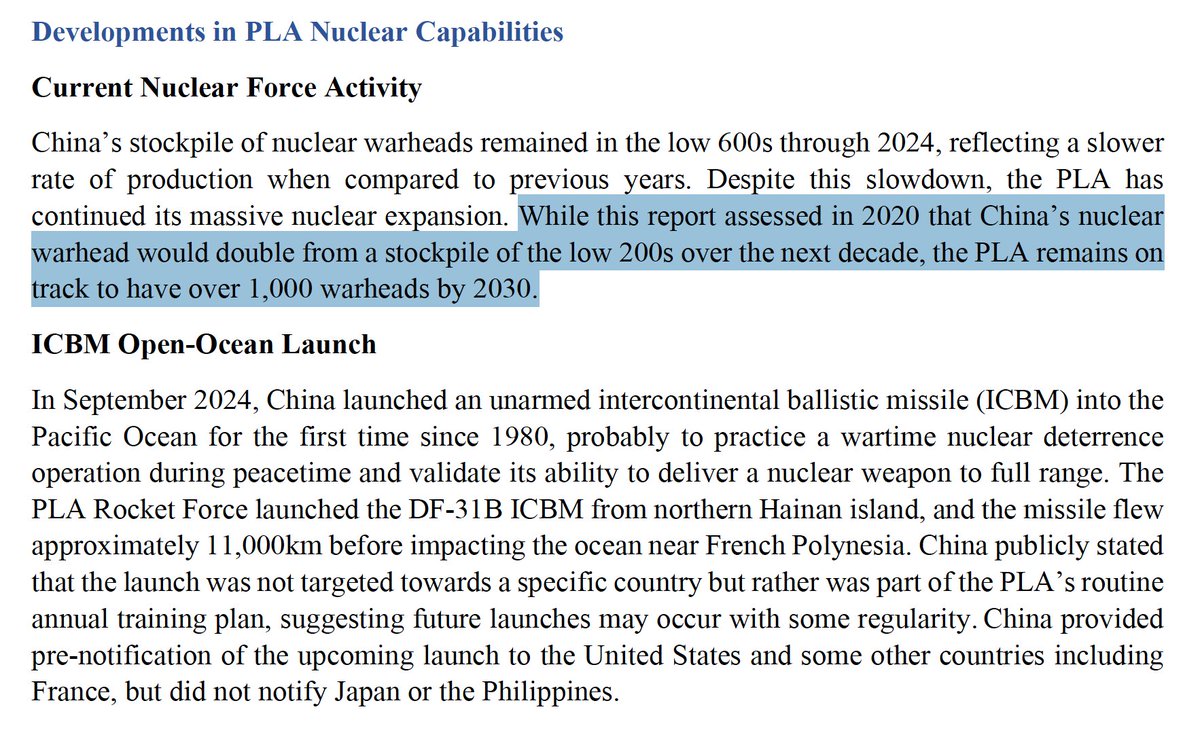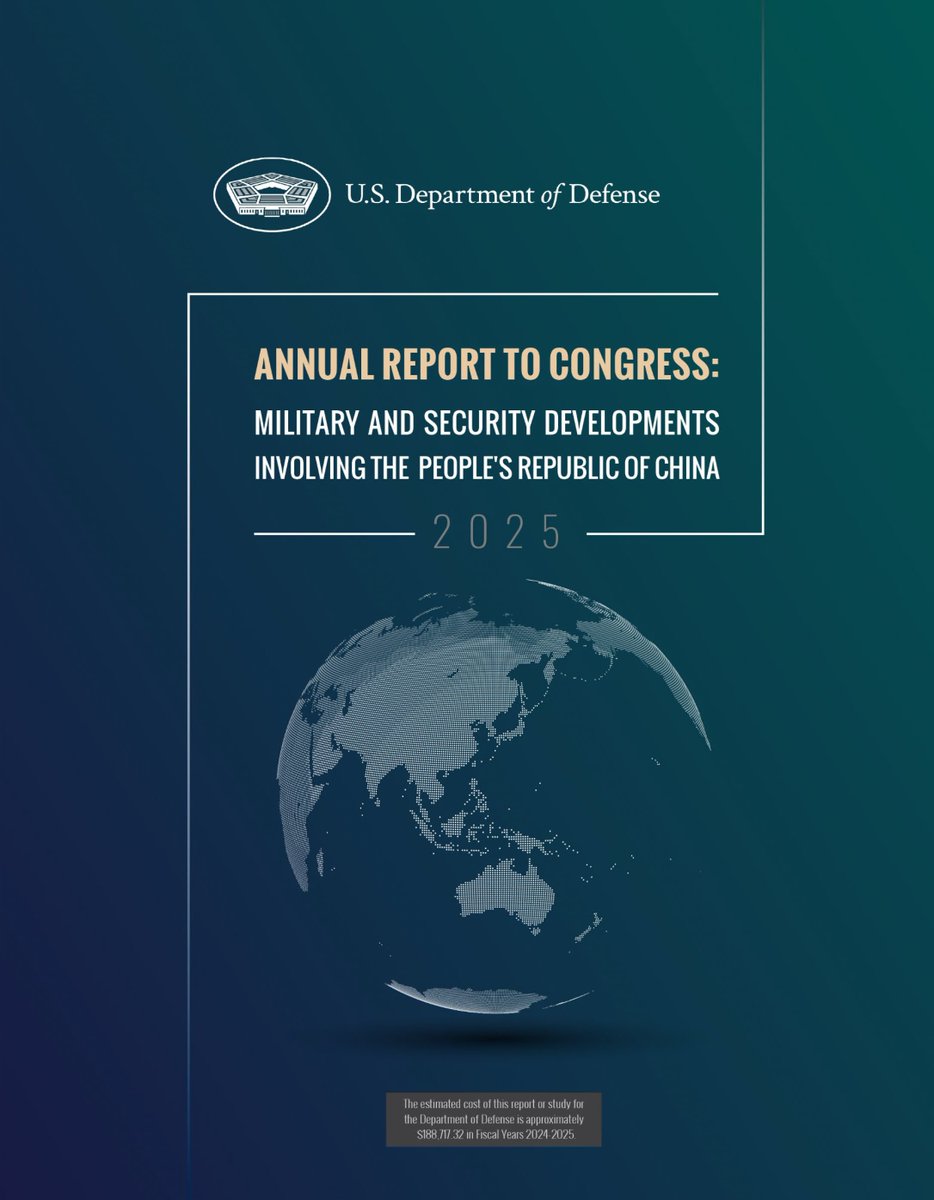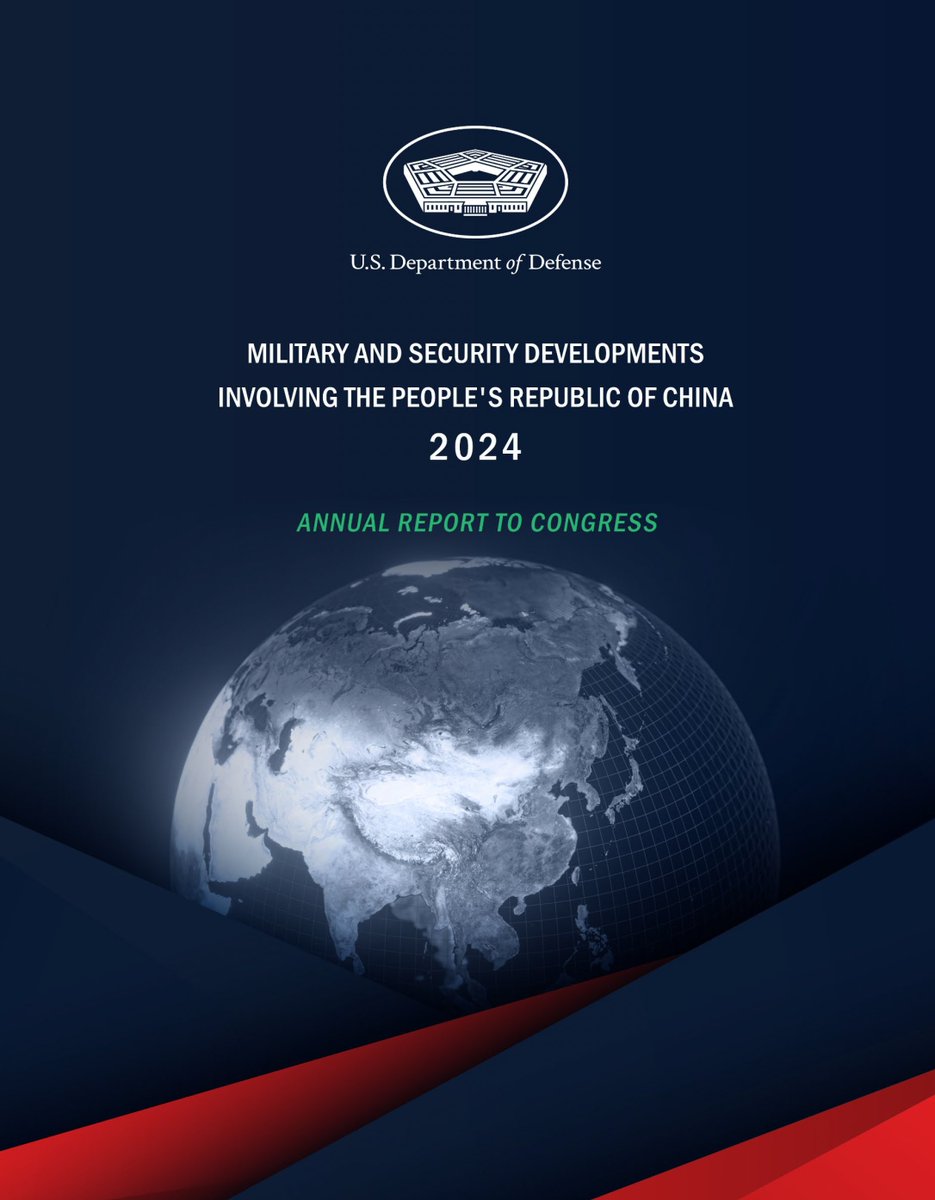In case you're wondering why China's expanding its navy at such scale, here's the answer—straight of the recent translation of their 2020 Science of Military Strategy. Hint: it's not about taking Taiwan, facing down regional neighbors, etc.
Global interests, global naval power.
Global interests, global naval power.

Would you like to know more?
"...a China that can maintain the security of its own SLOCs is a China that can deny those SLOCs to others. This prospect...is what truly drives the unprecedented scale of Chinese maritime expansion." lowyinstitute.org/publications/a…
"...a China that can maintain the security of its own SLOCs is a China that can deny those SLOCs to others. This prospect...is what truly drives the unprecedented scale of Chinese maritime expansion." lowyinstitute.org/publications/a…
While the translations are rough, this looks like their taking note of Air-Sea Battle, Distributed Lethality, etc.
And they clearly aren't cool with continued U.S. naval primacy, or even the idea of the "so-called" global commons outside of territorial seas.
And they clearly aren't cool with continued U.S. naval primacy, or even the idea of the "so-called" global commons outside of territorial seas.

I see that the PLA has recognized, as we have, that carrier-based UAVs will have strong attack capabilities.
Hang on a sec: I'm being told that we have not, in fact, recognized that.
Hang on a sec: I'm being told that we have not, in fact, recognized that.

If you were wondering whether Djibouti would remain the PLA's only overseas military facility...surprise, surprise, it won't: 

BTW, in case you were worried about China's intermixing of conventional and nuclear-capable missiles, don't expect that to change anytime soon—they appear to very much consider that to be a feature, not a bug: 

As for conventional PLARF ICBMs - perhaps not such a wild idea after all...
Interesting that they seem convinced that the U.S. is deploying conventional ICBMs, when that is actually not a part of any program of record, much less a transformation that is underway.
Interesting that they seem convinced that the U.S. is deploying conventional ICBMs, when that is actually not a part of any program of record, much less a transformation that is underway.

One more thing: in the section about future naval construction, what's interests me is what's NOT talked about. The center of force structure development is presented forthrightly: aircraft carrier formations and nuclear submarines, plus ISR, AEW, long-range strike, info ops. 

Another focus area: development of longer-range forces, including large transport ships and large integrated landing ships, for a "long-sea" strategic projection force.
So...what about short-range landing ships for, you know, "national reunification"? (i.e., Taiwan) No mention.
So...what about short-range landing ships for, you know, "national reunification"? (i.e., Taiwan) No mention.

DoD's assessment has been and continues to be that the PLA lacks the sealift for an all-out amphibious invasion, and doesn't appear to be doing much about it. This document doesn't seem to show any plans to change that, with the PLA moving on to power projection further afield. 

So what's the deal? Does the PRC not really intend to be able to invade Taiwan by sea? Will it build lots of helicopters instead and focus more on aerial assault? Is it waiting to build up the PLAN's amphibious fleet later? If so, seems like we'd see that coming from a long way.
Maybe they're planning to build a missile force so threatening that they get the Taiwanese to "come out with their hands up", or to wreck Taiwanese, US & allied forces so thoroughly in the opening salvo that they can effectively invade unopposed. cnas.org/publications/r…
Or perhaps their amphibious assault fleet has been hiding in plain sight & just isn't painted gray? Or maybe some combination thereof?
Any way you cut it, this apparent ongoing capability gap draws my eye, and makes me wonder what they have in mind. warontherocks.com/2021/08/mind-t…
Any way you cut it, this apparent ongoing capability gap draws my eye, and makes me wonder what they have in mind. warontherocks.com/2021/08/mind-t…
I forgot to mention - if you want to read the (translated) words for yourself, check it out here at CASI’s web site: airuniversity.af.edu/CASI/Display/A…
• • •
Missing some Tweet in this thread? You can try to
force a refresh




















